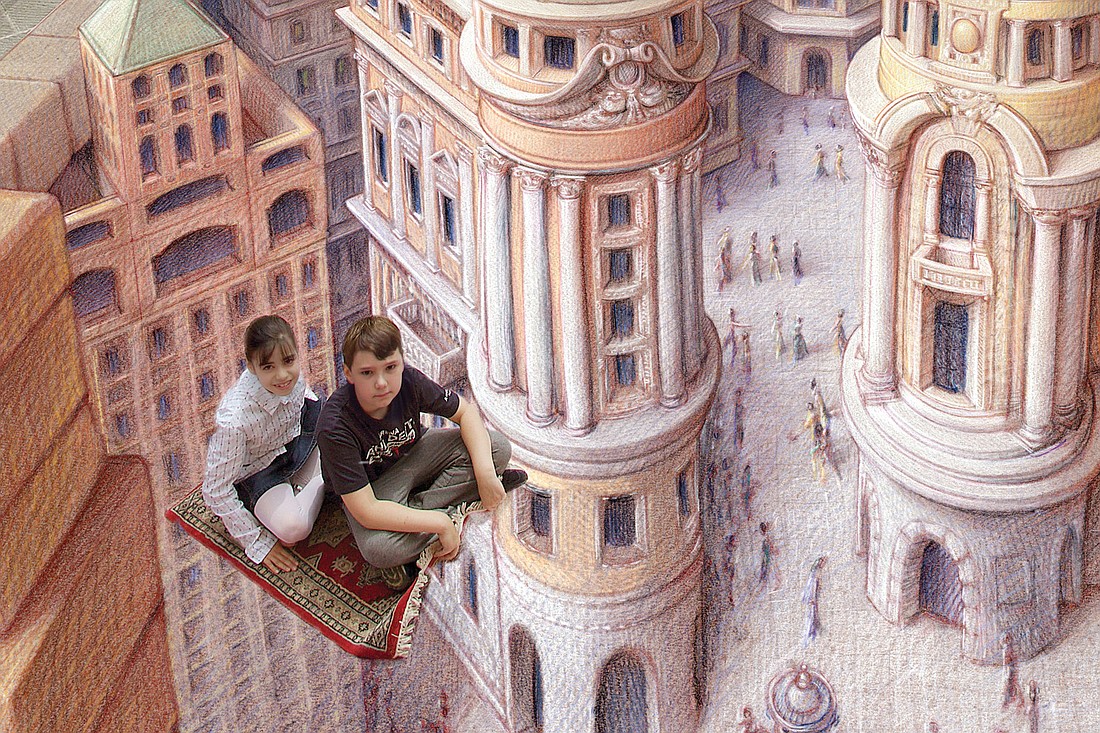- May 19, 2025
-
-
Loading

Anamorphic chalk artist Kurt Wenner and his hundreds of pastels are coming to town for this year’s Sarasota Chalk Festival. Last year’s was the first chalk festival the 52-year-old had participated in since 1995. Although he led workshops and put on a show at last year’s event, he didn’t contribute a masterpiece. This year, Wenner will create a piece in our backyard.
“A lot of festivals went in the direction I didn’t really care for,” he says during a phone interview from his studio on San Juan Island, near Seattle. It’s why he took such a long break from participating in festivals. Wenner has maintained his art, though; he has created a few advertisements and also broke a world record for the largest work of its kind drawn by one person (a piece for Greenpeace).
Wenner is renowned for being the inventor of 3-D pavement art. He also started the vast majority of festivals that take place around the world, most of them as fundraisers for art programs.
“But one aspect was that the less the organizer paid the artist, the more they made, so the tendency for the festivals was to become amateurish,” he says.
His real hope for festivals was to link high-quality, professional art to the community — such as the Sarasota Chalk Festival does. The Sarasota Chalk Festival hosts pros from around the world, as evident on the pavement masterpieces. Wenner attributes its success to founder Denise Kowal, “the first person with good taste” to do it this way, he says.
For this year’s festival, Wenner will transform a 1,200-square-foot space of asphalt into this year’s “Circus City, USA” theme. He has planned a circus animal parade coming to town, and it will be a collaborative effort with more than a dozen artists, some of whom are locals, who will work together on his piece for four days.
Wenner is also using a technique he’s never tried before. To view his piece, the spectator will stand on scaffolding, which will take a viewer’s eye level from the standard 5.5 feet to 15.5 feet. It’s a different geometry than he has used before, but using this technique will give him the opportunity to make things taller; it will appear as if the piece goes on for infinity.
Infinity is a subject Wenner knows well. His first professional job in the early ’80s was as an advanced scientific space illustrator for NASA. That was before computer graphics.
“They needed to have an artist draw the spacecraft in perspective and show it in other environments and planets,” he says. He had to represent infinity and push the perspective.
“It’s what I brought to the street when I first started doing pavement art,” he says.
Wenner’s love for this kind of geometry stems from his mathematician father, Adrian Wenner, who wasn’t thrilled with the idea of his son becoming an artist.
His dad would bring home books that combined mathematical principles with art principles; he hoped it would generate an interest for math for his son. It did — but not in the way he had planned. Wenner took geometry as a foundation for art; the same way it was used as foundations of ancient monuments, sculptures and Renaissance art.
As a kid, Wenner wasn’t the sidewalk-chalk drawing prodigy you might expect — though, he did steal some chalk from the supply closet at school once. He began the chalk craft later in his life, while he was living in Italy, as a solution to being strapped for cash.
“(In Italy) I saw some of the last surviving pavement artists on the street and I thought, ‘Well, I don’t speak the language and I don’t have a work permit,’” he says. So he opted to reproduce copies of the masters via pavement art. Soon after, he began creating original work in the classical style.
“At a certain point, I got bored with that because people didn’t realize it was my own work. They thought I was still copying the masterpieces,” Wenner says. He wanted to do something they’d never seen, something they’d have to recognize wasn’t a reproduction.
In 1984, Wenner created the first 3-D chalk art. Picture Renaissance-style gods coming out of holes in the pavement.
“Modern art has created a mental disconnection between the natural world and human creativity,” he says. “What I’m trying to do in my work is to show that you can actually go back and rebuild this broken link and still be innovative and creative.”
But art isn’t used as a means of expression for Wenner. Instead, it’s his way of understanding the world around him. It is the visual language he uses to process. “We’ve gotten rid of a way that one could think or solve problems,” he says. His mission is “to show people that one can draw, drawing is fascinating and to make them curious,” he says. If someone gets a sense of disbelief from looking at his work, then he has done his job.
“Now it’s funny, because so many people are used to it, so you have to keep pushing it further and further to maintain that state of disbelief,” he says.
Cue this year’s festival, which runs Oct. 28 to Nov. 6, and let the jaw-dropping ensue.
IF YOU GO
Sarasota Chalk Festival
When: From sun-up to sun-down Oct. 28 through Nov. 6
Where: Historic Burns Square
Cost: Free
Info: Visit chalkfestival.org